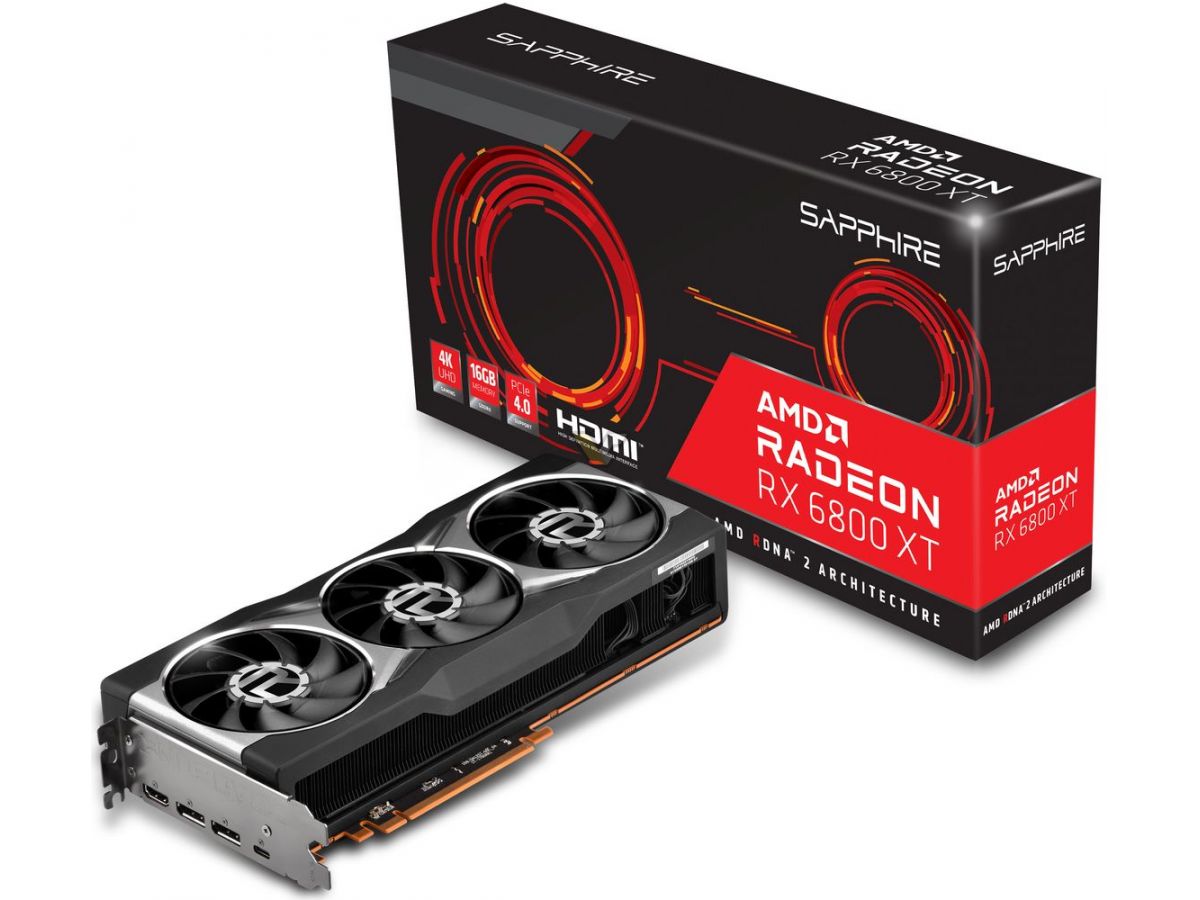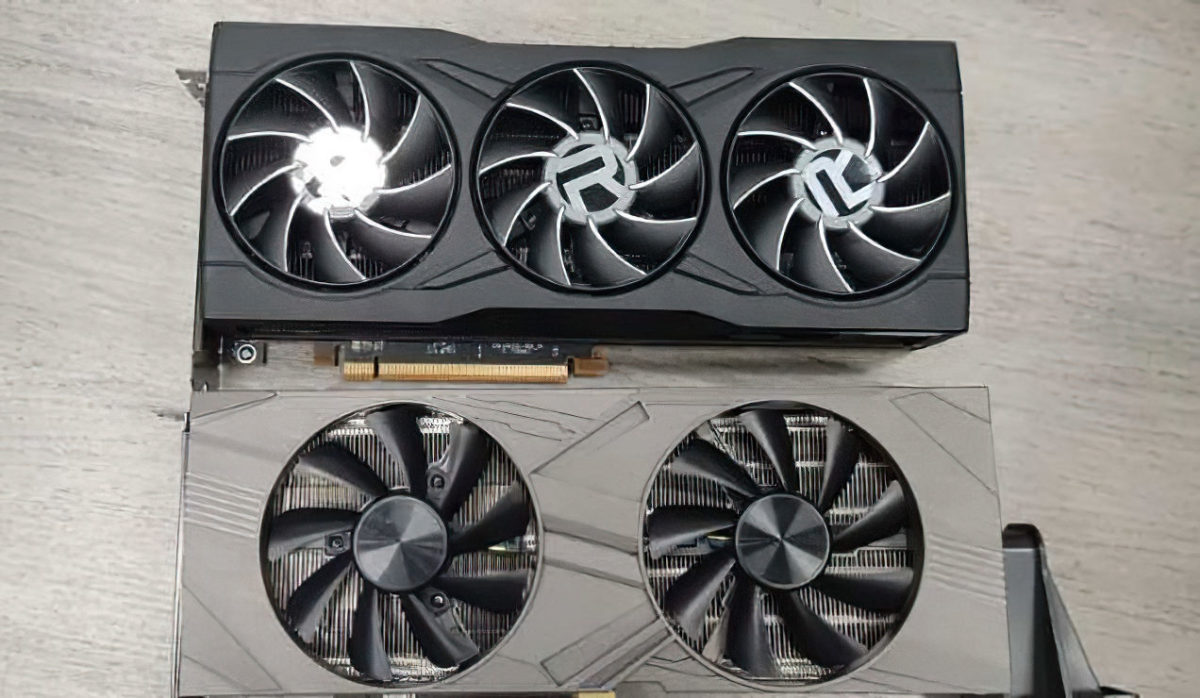2 Slot 6800xt
- The AMD Radeon™ RX 6800 XT graphics card, powered by AMD RDNA™ 2 architecture, featuring 72 powerful enhanced Compute Units, 128 MB of all new AMD Infinity Cache and 16GB of dedicated GDDR6 memory, is engineered to deliver ultra-high frame rates and serious 4K resolution gaming.
- 6800xt found in: Sapphire NITRO+ Radeon RX 6800 XT, 16GB, Sapphire NITRO+ Radeon RX 6800 XT SE, 16GB, MSI Radeon RX 6800 XT GAMING X TRIO 16G, 16GB, ASUS ROG Strix LC Radeon RX 6800 XT OC Edition, 16GB, Gigabyte Radeon RX 6800 XT.
With more and more information leaking out the hype around AMD’s “Big Navi” continues to build up. To make sense of it all I did some research into drivers and other documents and also reached out to a few sources and compiled the following information:
RX 6800
Looking at the 6800, the 64 Compute Units along with a boost of 2100MHz stand out among some other information that was mostly already public. Depending on what price AMD decides to sell this GPU at it should be a great 1440p performer and a decent entry point to 4K. The TDP is 220W but the TBP is still unclear, with some sources at partners claiming 290W.
There’s some confusion out there regarding the process node. I’m still leaning towards the process node being TSMC’s 7nm EUV based on the information I revealed in this video back in March 2020. In it I shared that the SRAM (cache) for N21 and the upcoming microsoft and sony consoles is Synopsys’s dwc_comp_ts07neg42p11sacul256s which is listed on their website as TSMC 7FF Plus only.
RX 6800XT
For the 6800XT the standout numbers are the 2275MHz boost and 72 Compute Units. The TDP is 255W but again the TBP is unclear at the moment. What I said above about the process node also applies here.
It should be noted that with the latest test drivers the 6800XT is performing around 50%-55% above the 5700XT, but that might change with the release drivers.
The cooling design ROG Strix RX 6800 cards is large, with a 2.9-slot form factor. The central fan rotates clockwise while the two on the flanks spin counter-clockwise to reduce turbulence, much like the Gigabyte Gaming OC cooler design, which we're excitedly waiting to see more of! AMD RDNA™ 2 architecture is the foundation of next-generation gaming PCs and consoles. It is the bedrock of the upcoming revolution in PC gaming graphics and cloud gaming. AMD RDNA™ 2 elevates and unifies visual effects and gameplay across multi-gaming platforms, like no other graphics architecture before.
MALL and XGMI / Infinity Fabric

MALL stands for Memory Access at Last Level and is a feature exclusive to Sienna Cichlid (aka Big Navi). It’s meant to provide access to the display controller to the memory hierarchy level below VRAM. XGMI / Infinity Fabric is a new feature in RDNA2 that is meant to address GPU-to-GPU communication. Both of these features seem to point towards AMD being heavily invested in Multi-GPU support in some capacity. I will have more information on this in an upcoming video 😉 .
Short supply?
A little known fact in the PC enthusiast community is that Taiwanene substrate manufacturer Kinsus disclosed in a recent earnings call that they received a large order from NVidia of Ajinomoto Build-up Film (ABF) substrate. ABF substrate supply shortages are expected to last until the end of the year. While AMD is rumored to be re-allocating some of their substrate capacity to RDNA2 GPUs from the large reserve that was already allocated to the Ryzen CPUs, NVidia is being heavily handicapped by a lack of the crucial substrates needed to fabricate the large Ampere dies. As DRAM, NAND flash memory, and large Multi-core CPU demand remains healthy, GPU availability will likely be limited for the foreseable future thanks to ABF shortages, which will likely lead to retailers milking consumers whenever inventory becomes available, given the high demand for new GPUs from both vendors. Expect Ampere stocks to be somewhat replenished in the coming days but at a much higher than msrp price!
What about the RX 6900XT?
The XTX variant of Navi21 continues to be a mystery with very little information available. Only the CU count seems certain at this point, at least according to my own sources and research.
Techpowerup 6800xt Review
According to sources the main difference between the 6900XT and the 6800XT is the CU count, but there are reports from some sources that indicate the clocks are reaching close to 2350MHz. If this is the case then my previous report of “2080ti + 15%” was below the final performance numbers, at least for this particular model. Fingers crossed!
Different GPU Shrouds!
Lastly, I was shown the GPU shrouds for both the 6800 and 6800XT (AMD reference models) and they have some small differences. Unfortunately I am not able to publish the images at this point, but looking at the pictures I can tell you that the one that Lisa Su was holding during the 6000s event last week was in fact the 6800XT. The 6800 is slightly different although it also features a triple-fan design. The 6800 seems to be 2 slots while the 6800XT seems to be 2.5 slots judging by how the shroud covers the bracket (unlike the 6800 which has the bracket rolling over it), although it’s difficult to say exactly given the angle of the pictures. The chrome stripe that runs horizontally across the GPU is different on the 6800 but I’ve been asked not to share too many details. I haven’t seen the 6900XT shroud at the time of writing, and although there was a 2 fan design circulating in the past, I haven’t seen any GPUs based on it either at this point. It’s likely that the 2 fan design is reserved for N22 or N23.
Sapphire 6800 Xt

➼ Support Coreteks on Patreon for more articles and videos
It’s possible some of the information above has been made public elsewhere before this article was published. Apologies to other tech news outlets if that is indeed the case as I haven’t had much time to keep track of everything that’s going on in “leakland” 🙂 Please get in touch if you’d like to be credited.
Radeon Rx 6800 16g
Further reading: https://taipeitimes.com/News/biz/archives/2020/06/15/2003738214